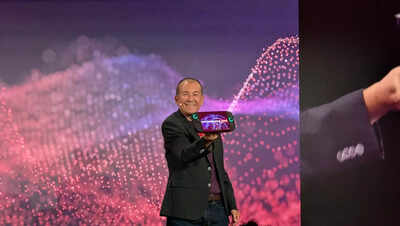ARTICLE AD BOX

Lenovo's
Legion Go 2
is finally here, and it's bringing some serious upgrades—along with a price tag that might make you do a double-take. Starting at $1,099 when it launches in October, this
Windows handheld
costs $400 more than its predecessor, pushing it into territory where you could just buy a
gaming laptop
instead.But spend a few minutes with the Legion Go 2, and you start to understand what that extra money gets you. The 8.8-inch OLED display is genuinely stunning, with inky blacks and vibrant colours that make the original's IPS screen look dated. More importantly, it supports variable refresh rates from 30-144Hz, so even games struggling to hit consistent frame rates should feel smoother than before.Under the hood, Lenovo hasn't held back. The base model packs AMD's Ryzen Z2 chip with 16GB of RAM, while the top-tier configuration jumps to a Z2 Extreme with 32GB of RAM and 2TB of storage. That 74Whr battery—50 percent larger than the original—should finally deliver respectable gaming sessions without constantly hunting for outlets.The whole thing feels more refined too. Those detachable controllers—still the Legion Go's party trick—have been redesigned with better curves and a proper D-pad that actually clicks like it should. The unique "FPS mode" that turns the right controller into a vertical mouse remains wonderfully weird and surprisingly useful for certain games. The dual USB4 ports, fingerprint reader, and that clever kickstand all add up to something that feels thoughtfully designed.

It's a serious piece of hardware that could legitimately replace a gaming laptop for many users. Still, that pricing stings. At $1,099, you're in serious gaming laptop territory. Lenovo seems aware of this tension but isn't backing down. As
Volker During
- VP & GM, Gaming PC Business at Lenovo put it, they're targeting enthusiasts who "really invest in gaming as a serious hobby"—not casual buyers looking for a Switch alternative.For its price, Lenovo says it's very much a gaming PC – not just a sidekick to your laptop, something that
Windows
handhelds have been regarded as. "With the Legion Go 2, we see it as much more than that," Düring explains. "It can absolutely stand as a proper gaming PC in its own right." The pricing reflects this positioning: "That's why it sits higher in price: it's a top-of-the-line product aimed at people who want the best portable gaming experience available."It's a bold strategy in a category that's still finding its legs. Windows handhelds remain niche, and asking laptop prices for something you can't easily type on feels risky. The
Steam Deck
proved there's appetite for premium portable gaming, but even Valve's most expensive model costs significantly less. Whether enough gamers are ready to pay notebook prices for that experiment is the question Lenovo has to answer.



.png)
.png)
.png)
















 6 days ago
3
6 days ago
3







 English (US) ·
English (US) ·